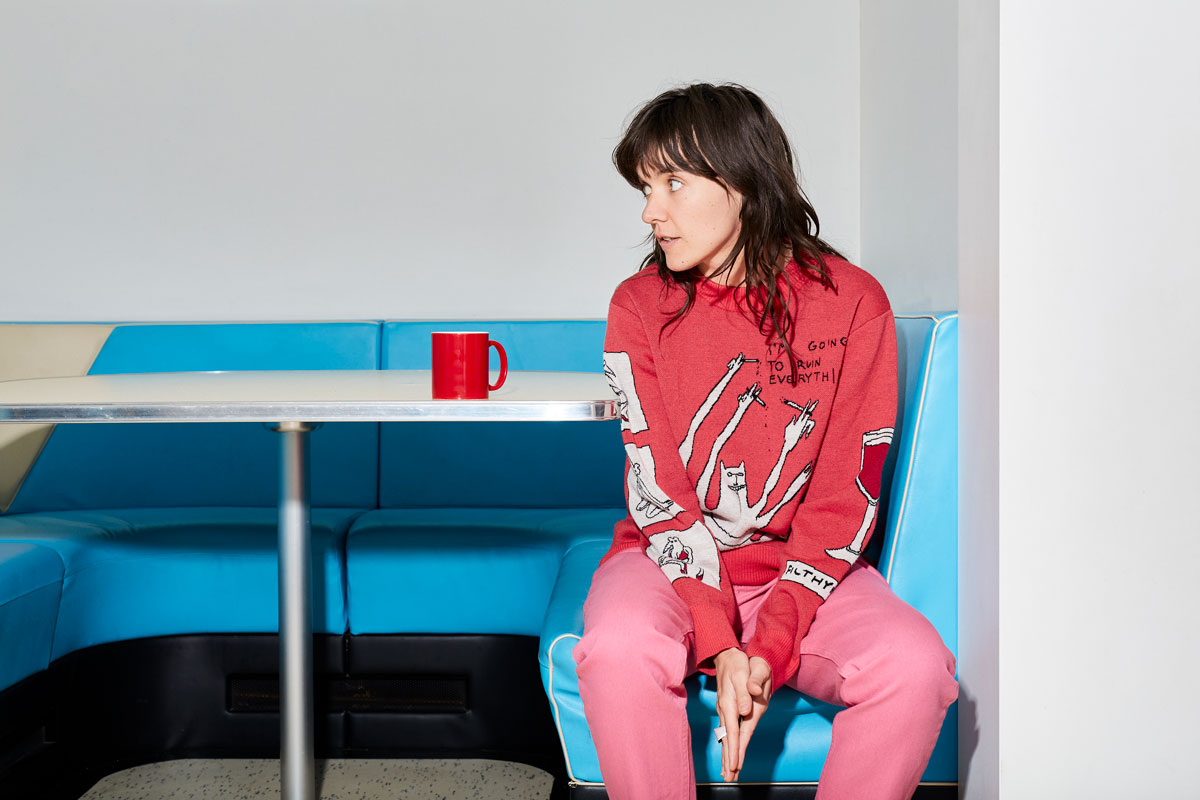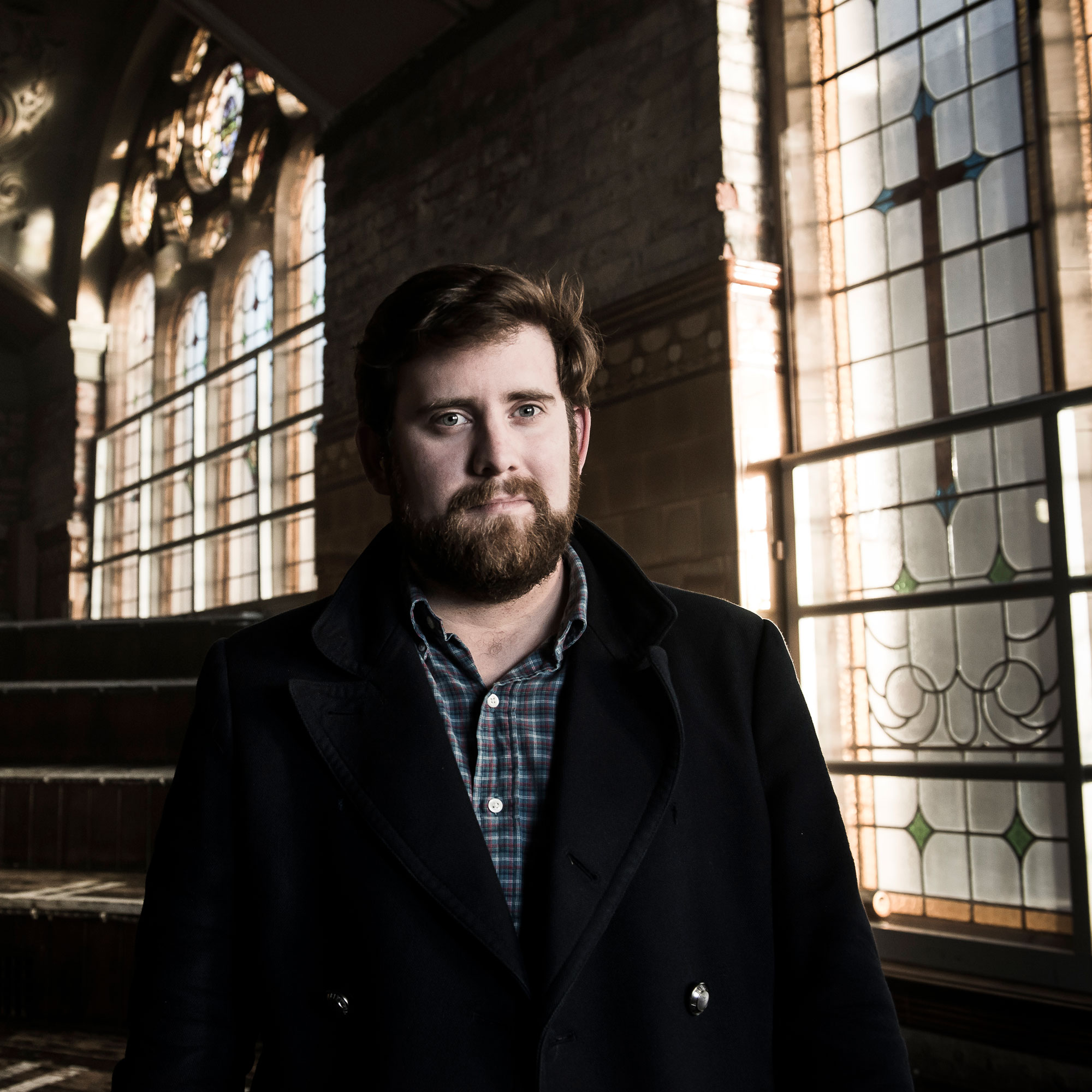Courtney Barnett: “I used to hide behind the noise I made with pedals. Now I'm using the guitar more like a paintbrush, finding what's needed”
We talk to the Australian indie-rocker about the benefits of time and space as a guitarist and songwriter, and the gear we hear on her reflective new LP, Things Take Time, Take Time

Australian singer-songwriter and guitarist Courtney Barnett’s third album Things Take Time, Take Time is a meditation on patience and vulnerability.
Following the heady touring cycle of second album, 2018’s Tell Me How You Really Feel, Barnett experienced a period of self-confessed “burnout” in 2019. It took 2020’s enforced stasis to give the songwriter the headspace that she didn’t know she was missing.
The songs she wrote across that period evolved from frustration to acceptance, and eventually a theme developed: the passing of time, of observing what happens when you give yourself space, both mentally and, as a subconscious reflection, musically.
“In the morning I’m slow, I drag a chair over to the window and I watch what’s going on, the garbage truck tiptoes along the road,” sings Barnett on opener Rae Street, relishing the daily display of life outside her apartment. “The day begins to shine, the parent teaches the child to ride the bike. Wobbles side to side. Two dogs entangle, everybody smiles.”
Things Take Time, Take Time is Barnett at her most open. Always a master observer, here her insights are presented without caveat, but feel somehow cheerful whatever the subject matter. “Don’t stick that knife in the toaster,” she says on Take It Day By Day. “Baby, life is like a rollercoaster.”
In noticeable contrast to the pace-y distortions of Tell Me How You Really Feel, the songs swim in the space. Fingerpicked acoustics and shimmering, melodic electric guitars jangle and echo. At points, you can feel the songwriter taking the time to feel the reverberations, rather than rush to the next change.
We spoke to Barnett about writing Things Take Time, Take Time, removing musical defense mechanisms and the “beautiful” custom Maton that proved integral to the record.
Get The Pick Newsletter
All the latest guitar news, interviews, lessons, reviews, deals and more, direct to your inbox!
You scrapped the initial songs you had been writing, which reportedly contained a sense of ‘ambient’ anger caused by a period of burnout. Why not sit with the ambient anger of that first batch of songs?
“Well, I feel like sometimes these things over the course of [interviews], somehow they get they get slightly muddled up. I wouldn't say that I scrapped them. I think the thing is that my songwriting process is that sometimes you need to write one song to get to the next song.
“And so that first song, like, I guess it doesn't get put into the world, but it doesn't get thrown away. It’s important in its in its role. And yeah, I always work like that, like all my songs in the past, there's always been versions of songs which don't end up existing, but they're still kind of integral to the overall songwriting process. So yeah, I might have been a little bit dramatic.
“Saying that, it sounds like I wrote an album and then threw it away, but it wasn't like that. It was just, you know, sometimes the songs just aren't right. So I move on to another one.”
So how would you describe the eventual character of this collection of songs as you think about it, compared to your previous two albums?
I feel like sometimes there's this fear of silence or of something not happening on a record. I think I was trying to embrace that a little bit, where I could
“It definitely feels like such a joyous album to me. I think it's not shying away from certain moments of pain or sadness or frustration, but just allowing all those feelings in and trying to find the balance and trying to focus on the small and beautiful things that exist.”
Tell me about the influence of Stella Mozgawa (co-producer and Warpaint drummer) on this record. You can hear a sort of percussive exuberance throughout, right from the opener, Rae Street. What effect did that collaboration have on your guitar playing?
“She was a huge influence and inspiration, musically. I think one of the things that I was going through in the album process, which is reflected in the title, is this lesson in patience, that I was embracing. And I think [that was coming through] even in the way that I write, and the way that I perform. It was not needing to fill every space and, in answer to your question, like, finding the gaps and finding the dynamic and embracing it.
“I feel like sometimes there's this fear of silence or of something not happening on a record. I think I was trying to embrace that a little bit, where I could, whether that meant completely muting a guitar track and seeing what that did to the song, how it helped build the song in a different way.
“Like Turning Green. That song is in the middle of the album, and that started out as like a full-on kind of jangly guitar song, but something just wasn't working. So we stripped it apart and ended up with the first two minutes just drums and bass and random sounds, and the guitar doesn't come in until the very end.”
You’ve discussed how you’ve embraced the vulnerability on this record, whereas previously you would address things that hurt your feelings as jokes in your writing, as a defense mechanism. Is this the musical equivalent of that? Being more out in front and using the guitar as less of a shield?
“I have definitely done that. You know, like a live defense would be just like stepping on all the loudest pedals that I have, and and making a whole lot of noise and like hiding behind that. But yeah I feel like I’m using the guitar like a paintbrush [this time]. You know, just finding the gaps and finding the spaces where it needs sound. Trying not to be too aggressive but also trying not to be too passive and just finding whatever is needed. And, sometimes, no guitar is needed.”
What did you want from the guitars on this album? To me, it definitely feels like your jangly collection.
“Yeah, it is. I wanted a warmer sound. We recorded to tape a bunch and used a few analog things and drum machines or whatever, but it was just trying to capture that warmth a little bit more. Like a calming sound. I think definitely on the last album I was going for more aggressive sounds and so yeah, this time it was that warmth and that fullness I wanted. So yeah, jangle is a good word!”
What kind of guitar gear did you use to do that? What were you leaning on most for the record?
“Well, actually because of the circumstances, of Covid, I actually I ended up going to Sydney to record this album, from Melbourne, which is like 10-hour drive. We found this great studio up there, but all I had with me was my Maton acoustic guitar and the Kurt Cobain Jag. I didn't even have my pedals with me, either.

“So I just had these two guitars and then the studio that we were in was just great. Simon [Berckelman] was the main engineer and I just used his amps. I went through his pedal box and I found like some some good Death By Audio pedals and this weird kind of POG pedal. So, yeah, it was kind of all brand new to me. I didn't really have the security of my normal gear.
“It was good. I think it pushed me just slightly outside my comfort zone, and and then we did a lot of stuff later. On Turning Green, for example, the guitar solo in that, we actually ran my guitars through a tape machine, and Stella and Simon were affecting the tape as I was playing. So it was kind of creating this, like, slightly wobbly sound. So some of it we were using the studio more as the tool. But the guitar [line-up] was pretty basic.”
Courtney Barnett's Maton CB-808
Barnett’s acoustic is made by Maton, the Australian acoustic maker, favored by everyone from Tommy Emmanuel to Tash Sultana.
“They built it for me. So I think it’s my own little personal design,” says Barnett. “I just pointed at two guitars that were on the shelf and said, ‘Can I get something in the middle of this?’ It was mainly the [combination of the] color and the shape. Nothing too extreme.”
A customized 808 – a shape unique to Maton that comes up a little smaller but much deeper than an OM – it has a triple-A spruce top with Blackwood back and sides, along with custom binding and rosette. It’s all finished in Vintage Amber Stain. “I love it,” says Barnett. “It's just so simple and sounds so beautiful.”
Though it’s not available as a signature model, Maton tells us they refer to it as the ‘CB-808’.
Was there anything unusual or different about the gear you used this time that stands out?
“We both we both played bass on the album, just with this really beautiful Fender Musicmaster, kind of Mustang-looking thing. I think we played that on every song. That was just a good vibe. Pedal-wise, I can’t really remember everything now, but there was a Death By Audio Reverberation Machine. I used that on nearly every song. Just so it wasn't too extreme.
“But I mean, even distortion-wise, definitely on the last album, there was a lot, and on this one I feel like Turning Green was the only really loud guitar part. But it was fun. With this album, because I wrote so much on the acoustic, I feel like some of the songs were so fleshed out, like Before You’ve Got To Go and Here's The Thing had these really beautiful melodic guitar parts.
We should constantly be reevaluating and reconsidering the ways we do things and looking at the intention behind those actions
“Which I hadn't really done so much – that very kind of fingerpick-y style – so it was really fun to do that. I also doubled a lot of the guitars with acoustic, just so it felt like a nice blend. I doubled a lot of the vocals, too, so we really liked that luscious, thick sound.”
I loved the Turning Green solo, which reminded me a lot of those post-punk experiments in arrangement, like Buzzcocks’ Moving Away From the Pulsebeat. What are the bits from this record that you love to play, or that you like most, in terms of guitar lines or sounds?
“I think in Here’s The Thing and a few songs there was a cello bow, which I used on a guitar just to get these rich string sounds. And that's always fun. I've done that a little bit in the past, but it was just fun to create this extra level. But yeah, I think the Turning Green guitar solo is probably one of my favorite moments on the album.
“It was one of those things where I did the first take and it felt really good, but it just wasn't perfect. And then I did 50 more, but I could never get it as good as the first one. The first one still has imperfections, and wrong notes and blah, blah, blah, but it's still better than any of the other ones, because it just had that energy, that kind of subconscious effort.”

You’ve said this record was about creating patience and space for your thoughts – things rarely afforded to the touring musician. How do feel about potentially losing that all over again, as you get back on that treadmill?
“I think it's just like acknowledging that was a great space, and to be able to find it in the future, or seek it out and build that world around me, so that it includes that space.
“Sometimes we just don't know [the benefits of] those things until it happens, so I think it's just a learning process. I think it’s about giving myself that time. We can all give ourselves that time in one way or another, carving out a few minutes in the day to find that space or that peace.”
I guess the process of writing songs is in itself a process of reflection. Particularly if you are able to do it outside of pressure to release new material.
“Yeah. And I think I think that's a good place to be as well. We should constantly be reevaluating and reconsidering the ways we do things and looking at the intention behind those actions. You know, like, ‘Why do I write? What’s it for? What's the purpose and what's the outcome?’ I think it should be like a constantly evolving thing.”
Finally, I have to ask because it's nagging me… The record’s title is Things Take Time, Take Time. What's the reason for the repetition?
“I think it's just a bit of a mantra that was circling in my head. I want people to make their own assumptions and their own interpretations. But, you know, the whole thing is a lesson in patience, so I guess it's a statement and an action. But the whole process is kind of repetitive and cyclical, so I guess it's a reflection of that.”
- Things Take Time, Take Time arrives November 12 via Mom + Pop Music.

Matt is Deputy Editor for GuitarWorld.com. Before that he spent 10 years as a freelance music journalist, interviewing artists for the likes of Total Guitar, Guitarist, Guitar World, MusicRadar, NME.com, DJ Mag and Electronic Sound. In 2020, he launched CreativeMoney.co.uk, which aims to share the ideas that make creative lifestyles more sustainable. He plays guitar, but should not be allowed near your delay pedals.
“A virtuoso beyond virtuosos”: Matteo Mancuso has become one of the hottest guitar talents on the planet – now he’s finally announced his first headline US tour
“His songs are timeless, you can’t tell if they were written in the 1400s or now”: Michael Hurley, guitarist and singer/songwriter known as the ‘Godfather of freak folk,’ dies at 83











